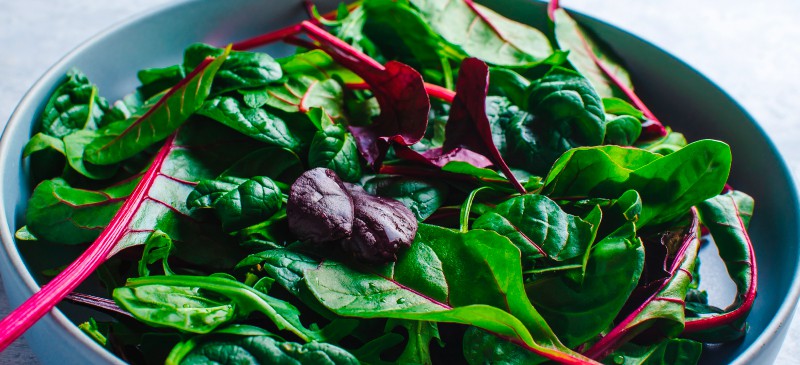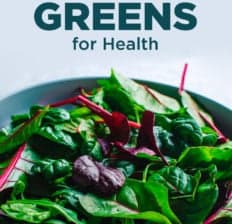This Dr. Axe content is medically reviewed or fact checked to ensure factually accurate information.
With strict editorial sourcing guidelines, we only link to academic research institutions, reputable media sites and, when research is available, medically peer-reviewed studies. Note that the numbers in parentheses (1, 2, etc.) are clickable links to these studies.
The information in our articles is NOT intended to replace a one-on-one relationship with a qualified health care professional and is not intended as medical advice.
This article is based on scientific evidence, written by experts and fact checked by our trained editorial staff. Note that the numbers in parentheses (1, 2, etc.) are clickable links to medically peer-reviewed studies.
Our team includes licensed nutritionists and dietitians, certified health education specialists, as well as certified strength and conditioning specialists, personal trainers and corrective exercise specialists. Our team aims to be not only thorough with its research, but also objective and unbiased.
The information in our articles is NOT intended to replace a one-on-one relationship with a qualified health care professional and is not intended as medical advice.
Top 16 Leafy Greens (& Their Benefits)
March 13, 2024

Diets rich in antioxidants — which help fight against free radical damage that contributes to aging and disease — are recommended for people of all ages. One group of foods that provides some of the highest contents of antioxidants, in addition to many other essential vitamins and minerals, is leafy greens, such as popular types like kale and spinach.
Researchers have found that a diet inclusive of dark leafy greens can defend the body against experiencing cellular damage, which is associated with health problems, such as:
- neurodegenerative diseases
- heart disease
- diabetes
- certain types of cancers
- earlier mortality
So what are the best leafy greens? Keep reading to find out.
Top 16 Leafy Greens
Which are green leafy vegetables?
Leafy greens are considered to be any type of plants with leaves and/or stems that are eaten as vegetables. This category includes various types of salad greens, pot herbs, vegetable greens and microgreens.
Which are the best leafy green vegetables?
“Dark leafy greens” are among the healthiest because a rich/deep green color indicates a high level of antioxidants. While there isn’t necessarily just one type of green veggie that is the best, some of the richest in nutrients include:
- Watercress
- Kale
- Swiss Chard
- Microgreens (like broccoli, kale and cabbage sprouts)
- Spinach
- Mustard Greens
- Dandelion Greens
- Collard Greens
- Turnip Greens
- Beet Greens
- Bok Choy
- Cabbage
- Romaine Lettuce
- Arugula
- Endive
- Radish Greens
Is broccoli a leafy green? Broccoli — along with Brussels sprouts and cauliflower — is actually a cruciferous vegetable rather than a leafy green.
However, it’s possible to eat broccoli microgreens, which are seedlings of edible vegetables that are eaten just when the leaves have developed, rather than when the vegetable has fully matured.
Benefits
Because they’re loaded with nutrients and phytochemicals but very low in calories, there are loads of benefits of leafy greens. In fact, these veggies are among the most nutrient-dense foods available to us, considering they are low in sugar, carbohydrates, sodium and cholesterol.
What are leafy greens rich in? Some of the vitamins, minerals and antioxidants found in most greens include:
- vitamin C
- vitamin E
- vitamin A/beta-carotene
- vitamin K
- folate
- fiber
- antioxidants
- polyphenols
- flavonoids
- lutein
- carotenoids
- sulforaphane
- and more
They also provide a hefty dose of magnesium, iron, potassium and calcium.
Here’s more about the benefits of eating leafy greens:
1. High in Cancer-Fighting Compounds
Almost all leafy greens are full of cancer-fighting compounds that help protect healthy cells from being damaged. For example, kale and other veggies in the Brassica family contain glucosinolates, quercetin, kaempferol and beta-carotene, which have all been shown to have anti-cancer effects.
According to the U.S. Department of Agriculture, “Studies have shown that eating 2 to 3 servings of green leafy vegetables per week may lower the risk of stomach, breast and skin cancer.”
Folate is also found in dark leafy greens, such as spinach and collards, which is needed to facilitate normal cell division and repair cells that defend against cancer development. For instance, there’s been a link found between higher intake of folate and lower risk for colon, breast, cervix and lung cancers.
2. Support Heart Health
Eating greens, such turnip greens, spinach and Swiss chard, will boost your intake of anti-inflammatory compounds along with potassium, which is necessary for maintaining healthy blood pressure and for muscle and nerve functioning.
Greens are also considered heart-healthy foods. A higher intake of fiber from vegetables is also associated with a lower risk for cardiovascular issues, like high cholesterol and coronary artery disease. Additionally, high vitamin K intake supports normal blood clotting and assists in arterial health.
3. Aid Digestion
Greens contain a combination of dietary fiber, electrolytes, such as magnesium and potassium, and glucosinolates that can help support detoxification and liver health by facilitating the production of important enzymes. They’re also capable of reducing constipation when consumed as part of a high-fiber diet.
These veggies are also beneficial for maintaining metabolic health and keeping your energy up due to being good sources of B vitamins, folate and iron — which are needed for nutrient absorption, healthy blood flow, prevention of anemia and fatigue, and more.
4. Help Protect Your Eyes and Vision
Most leafy greens contain high amounts of the antioxidants called lutein and zeaxanthin, as well as beta-carotene and vitamin C, which are known to protect eyes from oxidative damage and vision-related problems, such as macular degeneration.
5. Can Help You Maintain a Healthy Weight
Greens are low glycemic index foods that can help fill you up without adding many calories to your diet. Enjoying a daily salad, side of steamed greens or green smoothie is one way to help you maintain a healthy body weight.
Greens are especially recommended for people susceptible to type 2 diabetes, since they have anti-inflammatory and antioxidant properties.
6. Protect Cognitive Health
Studies have found that consumption of approximately one serving per day of green leafy vegetables daily can help slow cognitive decline (such as by lowering the risk for Alzheimer’s and Parkinson’s).
Other benefits of eating dark leafy greens include:
- supporting healthy blood clotting
- maintaining bone strength
- lowering the risk for type 2 diabetes
- fighting insulin sensitivity
How to Add to Your Diet
Many greens can be enjoyed both raw or cooked — however there are pros and cons to both approaches. For example, cooking greens can improve their taste and make their antioxidants more available, but it may also reduce levels of vitamin C.
For ideas on how to eat more leafy greens, try the following:
- Steam or sauté bitter greens like mustard, dandelion or kale to make them more appetizing.
- Add microgreens to sandwiches, salads, wraps or to garnish soups.
- Toss a handful into a green smoothie. Spinach and kale are popular for this use. Trying combining them with apple, mango, pineapple, raw honey and fresh ginger.
- Make pesto sauce using your favorite greens and herbs. Try blending together one cup of microgreens, one up of basil or cilantro, one chopped shallot, one minced garlic clove, and zest and juice of 1/2 lemon.
- Add some greens, such as Swiss chard or mustard greens, to whole grain pasta dishes along with garlic, olive oil, cherry tomatoes and chopped basil.
- Try having greens such as bok choy or mustard greens Asian-style by sautéing them with soy sauce, garlic and sesame oil.
- Sub collard greens for a regular wrap or bread to make a low-carb sandwich. Blanch the greens in boiling water for about three to five minutes first to soften them.
- Throw some veggies such as beet or turnip greens into an omelet to add volume and nutrients.
- Stuff a wrap or sandwich with watercress for a tasty “bite” and also to boost your vitamin and mineral intake.
Risks and Side Effects
While they are generally health-promoting foods and unlikely to cause side effects, greens can potentially contain harmful bacteria and microbes if they are aren’t transported and stored properly, such as E.coli, Salmonella, Listeria and Cyclospora.
To help reduce the risk for eating contaminated veggies, rinse all fresh produce well under running water to help remove some of the germs and dirt. Also check expiration dates, and check to see if your prepackaged leafy greens are labeled ready to eat, triple washed or no washing necessary, so you know how well they need to be cleaned.
Store pre-cut and packaged greens and salads in the refrigerator at a temperature that is 40 degrees Fahrenheit or below. Don’t leave greens out at room temp for more than several hours, which can cause bacteria to grow.
Conclusion
- Leafy greens are some of the most nutrient-dense foods and are considered important additions to a healthy, anti-inflammatory diet.
- They are loaded with disease-fighting nutrients and antioxidants, such as vitamins C, A and K; flavonoids; carotenoids; fiber; folate; and more.
- Some of the healthiest types to focus on include spinach, kale, mustard, dandelion, turnip greens and bok choy.
- These veggies can help protect you from heart disease, obesity, diabetes, vision loss and some cancers.









